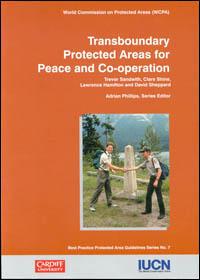Protected areas are vital for life on earth. They safeguard biological and cultural diversity, help to improve the livelihoods of local communities, provide the homelands for many indigenous peoples and bring countless benefits to society at large. It is now generally understood that conservation planning cannot just be site-specific; plants and animals do not recognize national boundaries, nor do many of the forces that threaten them. Strategies to conserve biodiversity in the 21st century must therefore emphasize transboundary co-operation , and may at the same time foster better co-operation and understanding between countries. This publication reports on the work undertaken by IUCN's World Commission on Protected Areas to focus attention on the conservation and security benefits of transboundary protected areas.
Includes bibliographic references and a list of "Adjoining protected areas and transboundary conservation", 2001, pp.57-75. Also available in separate Chinese language version.
The definitions of protected areas and related concepts in this title are out of date. Readers should consult BPG 23 and later titles for current definitions and best practices

